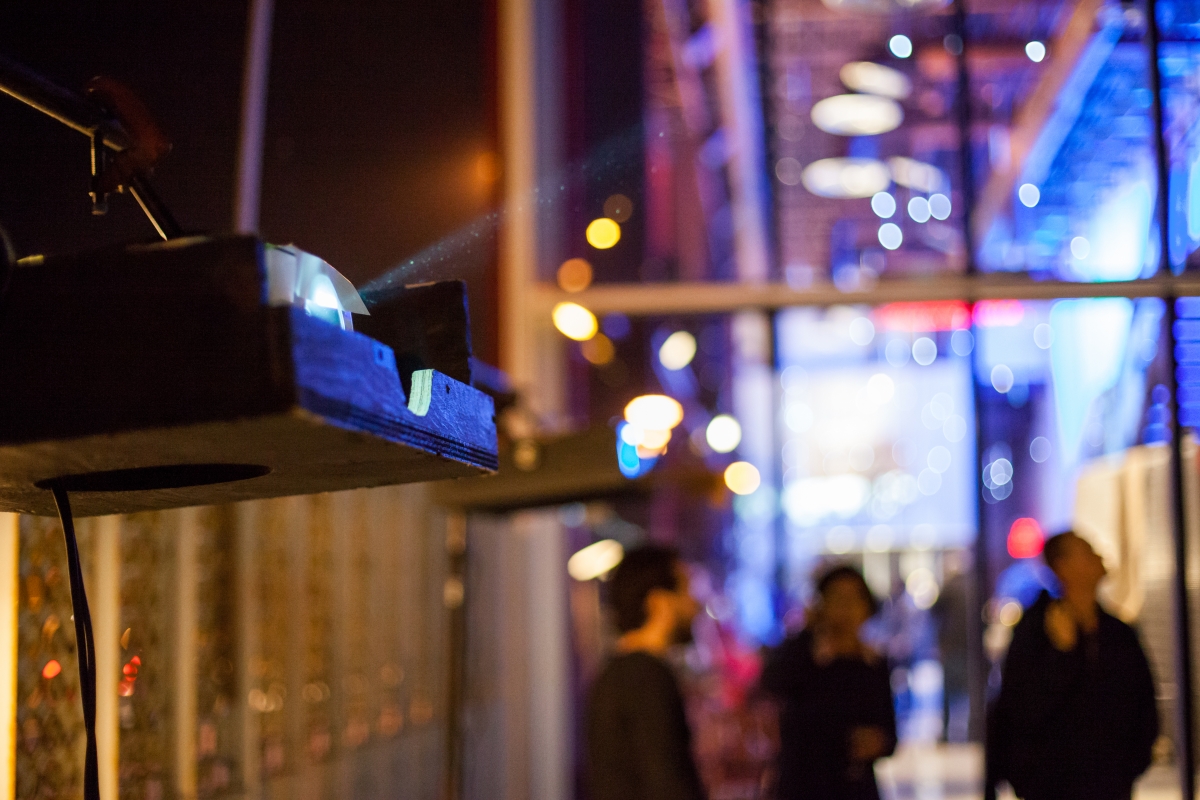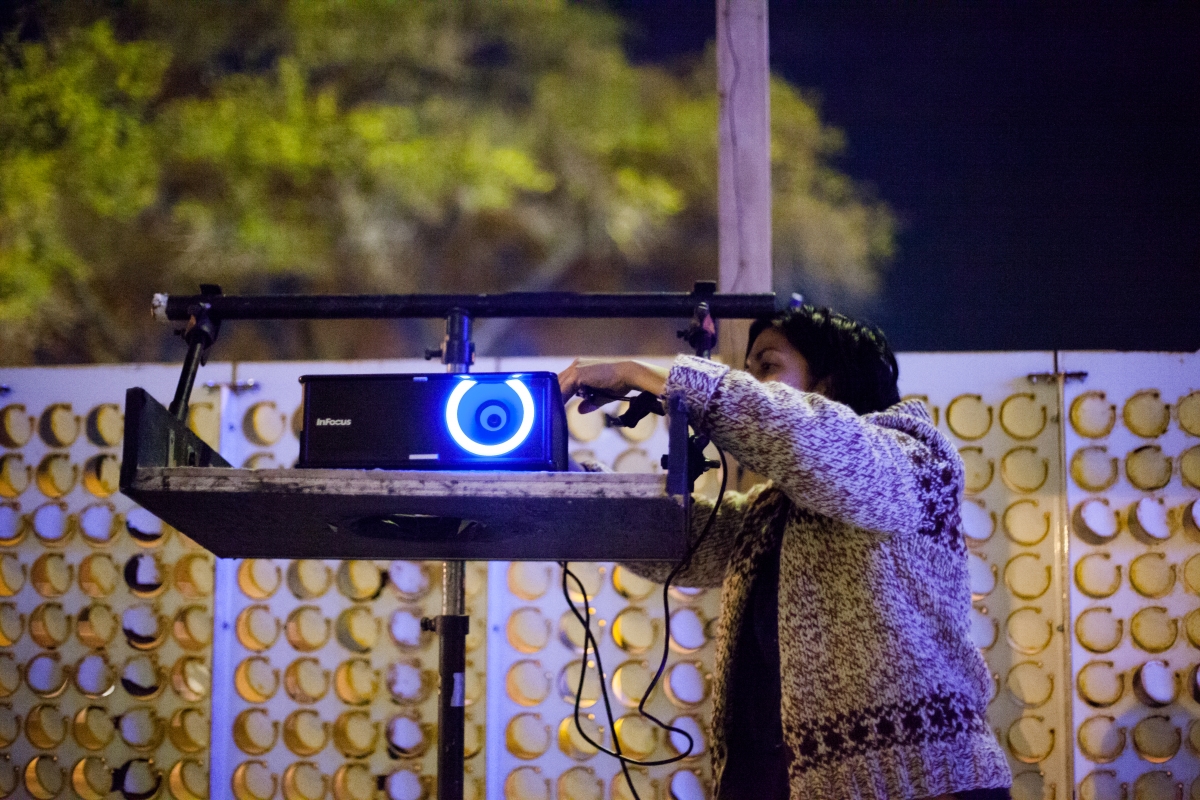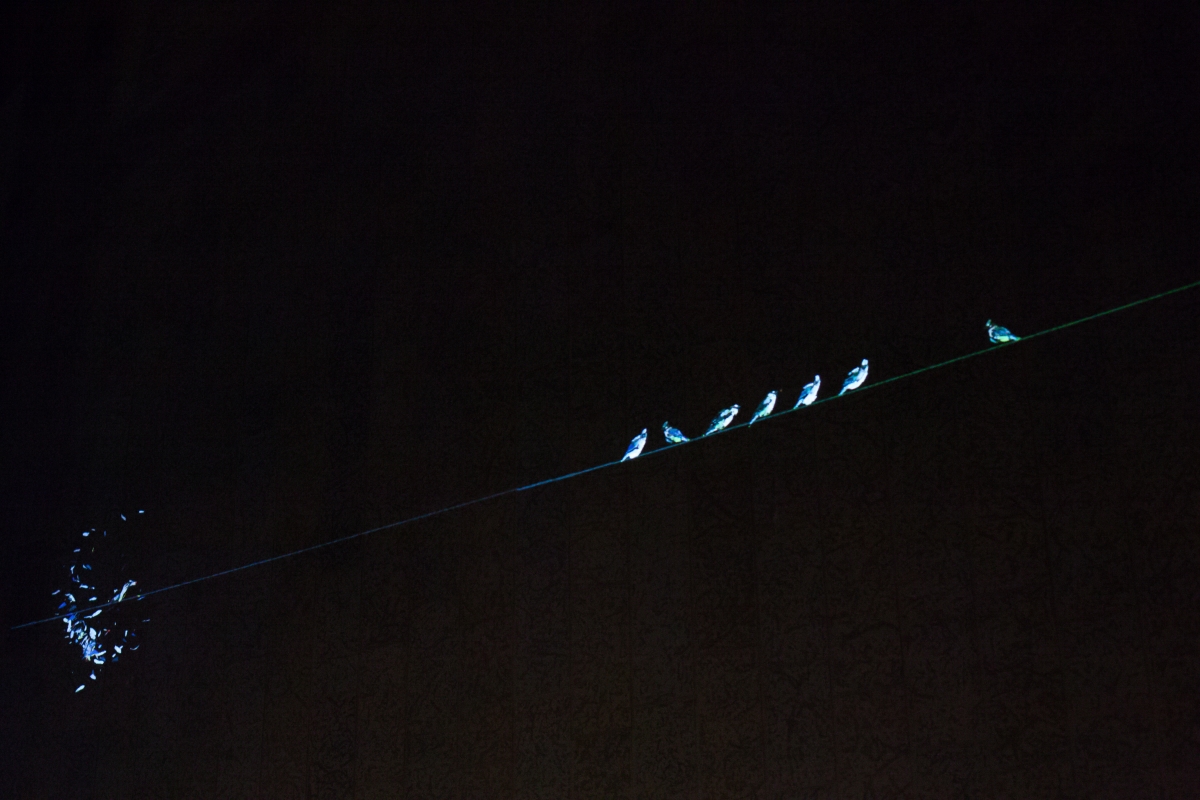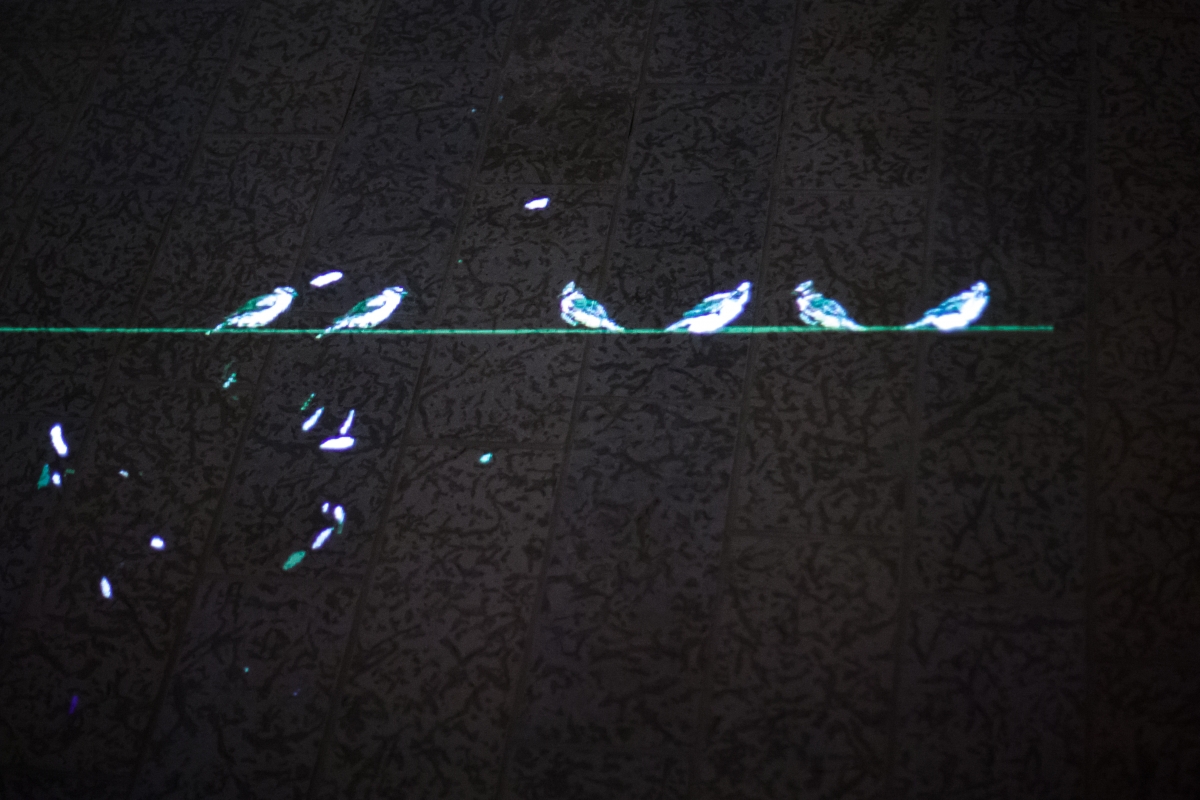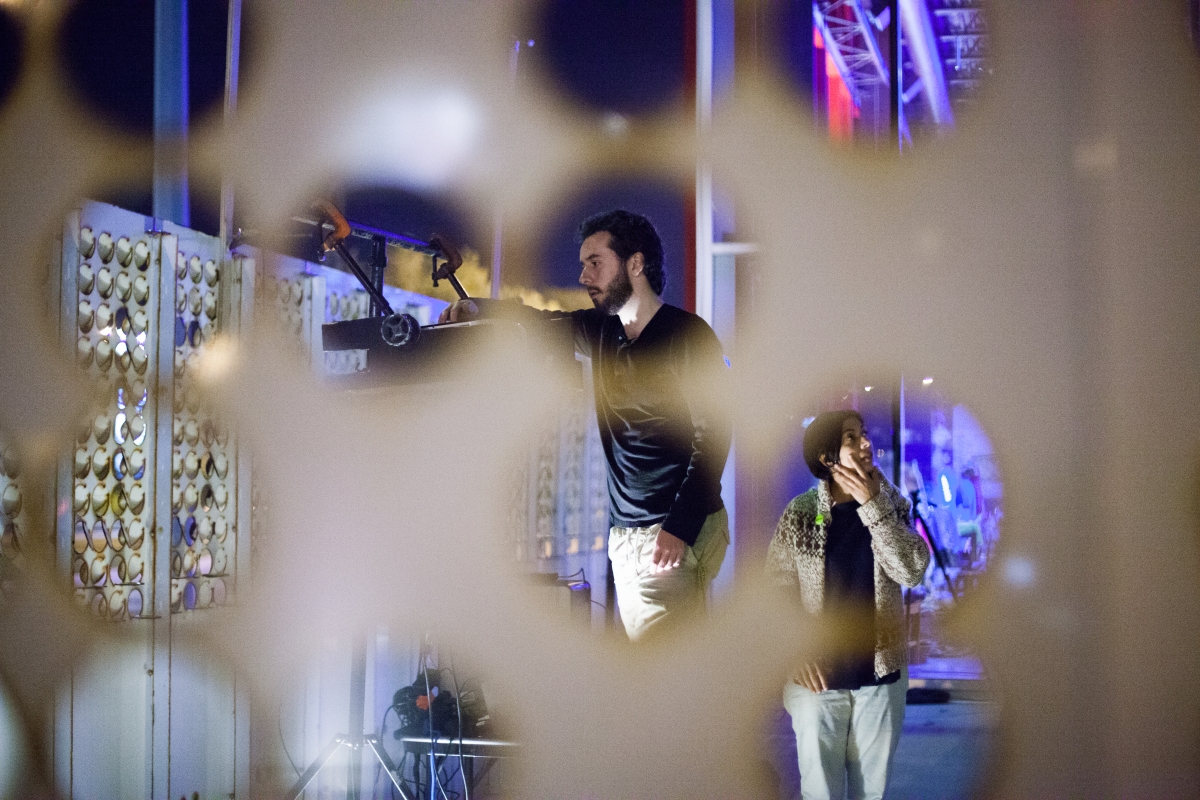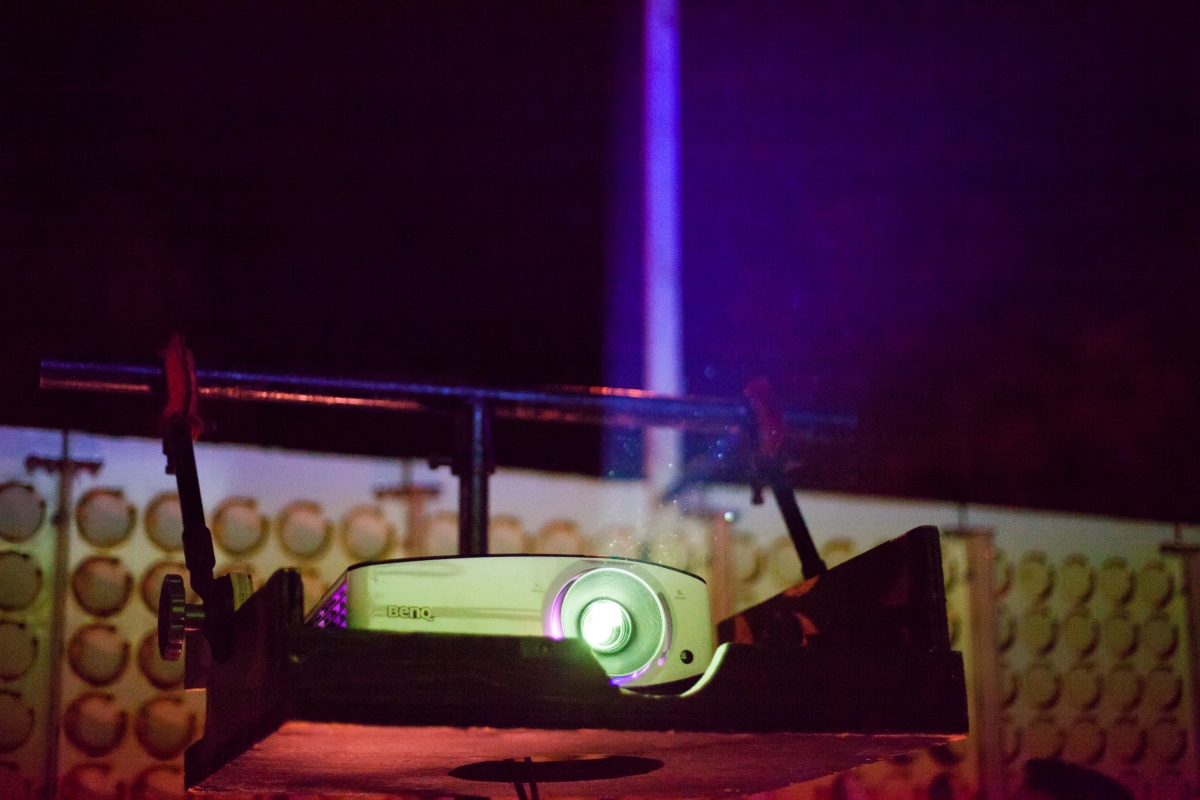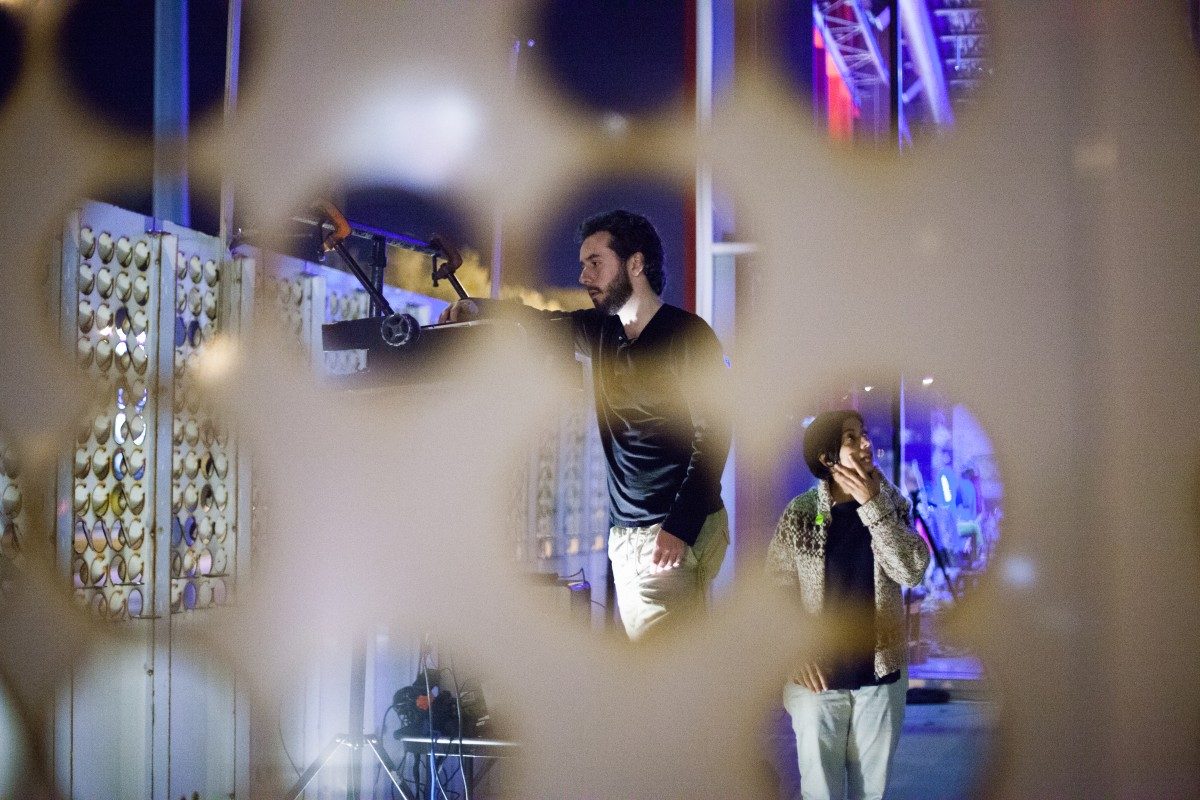
Nuit Blanche 2016 Winnipeg. Photo credit: Kira Koop.
All STEAMed Up
STEAM Coordinator Seema Goel, at the Faculty of Science charts a new course to innovation and collaboration.
Steam: it’s what makes tea kettles whistle, engines run, and it’s what you see coming out of the ears of some cartoon characters when they lose their temper. When it comes to education, however, STEAM is a different entity entirely. The engine it drives is one of imagination and creativity. Its’ goal is to push participants towards innovation by encouraging collaboration amongst people that might seem, at first, to be completely unrelated. Best of all, it’s come to stay at the Faculty of Science!
Championed by the Rhode Island School of Design (RISD) and widely adopted by institutions, corporations and individuals alike, STEAM came about as a way to take what are known as the STEM subjects (Science, Technology, Engineering and Math) and incorporate Art and Design into the mix. The program endeavours to dispel the twin myths of the socially awkward, uncommunicative scientist and the self-involved, impractical artist while simultaneously using the lateral thinking of the arts to engage the inherent creativity of the sciences with a view to facilitating new ways of thinking and making Science more accessible to those not currently involved with STEM.
The STEAM program coordinator here at the University of Manitoba is Seema Goel. I spoke with her recently to find out what STEAM is all about and why it’s beneficial to have such a program available to our students. Both a scientist and an accomplished artist, Seema was happy to expound on STEAM and how it can potentially enhance our students’ experience in the Faculty of Science.
“When you come right down to it, art and science are far more alike than not. As Seema points out, both the artist’s studio and the scientist’s lab are places where “learning by doing” and “learning by making” are the norm.
“Art is a way of thinking. Making [art] helps us to navigate our world… It’s a lot like a lab, because you’ve got to do it to learn from it.”
It’s true: both arenas utilize experimentation and repetition of results to bring the individual closer to a final outcome. Both scientists and artists are typically seen as outliers when it comes to society in general. They think differently from the norm, which allows them to see things in ways that others cannot. STEAM aims to capitalize on that alternative way of thinking.
Seema herself is a posterchild for the philosophy behind STEAM, with dual backgrounds in science and the arts. She has earned a BSc in Environmental Biology, an M.F.A. in sculpture and is presently working towards her MA.Sc. (Interdisciplinary) in Fine Arts/Environmental Engineering. Her enthusiasm for STEAM is evident as she describes one of her projects, entitled “Flock Together”.
The installation explores emergent systems (swarming patterns) as well as surveillance and the way we use nature as inspiration for investigating weaponry and computer systems (i.e. drones make use of similar patterns to fly in a group). In “Flock Together”, Seema created seven collage cedar waxwings, enlisting the help of fifth year Computer Science student Brendan Cordingley to animate the birds in order to make it an interactive display.
The birds are projected to scale and sit on a wire until someone approaches. At that point, the birds “… break into their fragment parts and swarm around the space in a flocking algorithm mimicking their species.” As soon as the person stops moving, the birds slowly settle back on the wire. Despite the potentially sinister nature of the piece (viewers know they are being watched), the piece is playful enough to draw viewers in, allowing it to fulfill its alternate purpose: surveillance and information gathering.
The creation of “Flock Together” would never have been possible without the work of Cordingley, whose job it was to program the fragmentation, regrouping, and swarming behaviours of the birds and track the movements of the viewers. Speaking with Brendan, it was immediately apparent that working to create “Flock Together” was a high point in his university career.
“It was a new way to apply something I’ve been working on for a long time,” says Cordingley. Collaborating with a non-computer scientist was a novelty as well. “We come from two completely different fields. I’m usually working with someone from the same background.” In more ways than one, working on the project was about “…pushing your limits and seeing things in a different way.”
A highlight of Brendan’s STEAM interaction? Presenting “Flock Together” at Beakerhead, a Calgary-based festival that mashes up art, science and engineering. Cordingley enthused about the opportunity to meet people he otherwise would never have known, as well as the chance to engage young students in attendance. The project was a “… good way to visualize [computer] science, rather than just as code in a computer.”
With its enormous potential to expand the horizons of those involved, STEAM is here to stay. The time has never been better to encourage our students to challenge themselves with the kind of hands-on, real-world experience they can gain from participating in this program. If you’re looking for a way to take your education to a higher level, you’ve found it.
Students will have the opportunity to share their passion for science with thousands at Science Rendezvous, an annual nationwide science festival to be held on campus on May 12- 13, 2017. Science Rendezvous is a dynamic, hands-on exploration of science through creative activities, experiments and theatrical spectacles. Volunteer opportunities include a primary school day on Friday, May 12, from 10am – 3pm, and a free science carnival day, open to the public on Saturday, May 13, from 11 am – 4pm.
For more information
Contact Seema if you’re looking to collaborate, or volunteer for Science Rendezvous or any other initiatives email: seema [dot] goel [at] umanitoba [dot] ca or visit: www.umanitoba.ca/science
Seema Goel’s website
http://seemagoel.com/
Follow
STEAMumanitoba on twitter
https://twitter.com/STEAMumanitoba
Visit
STEAM Facebook Page:
https://www.facebook.com/steamumanitoba/?ref=bookmarks
Science Rendezvous Facebook Event:
https://www.facebook.com/events/1788752878046166/







